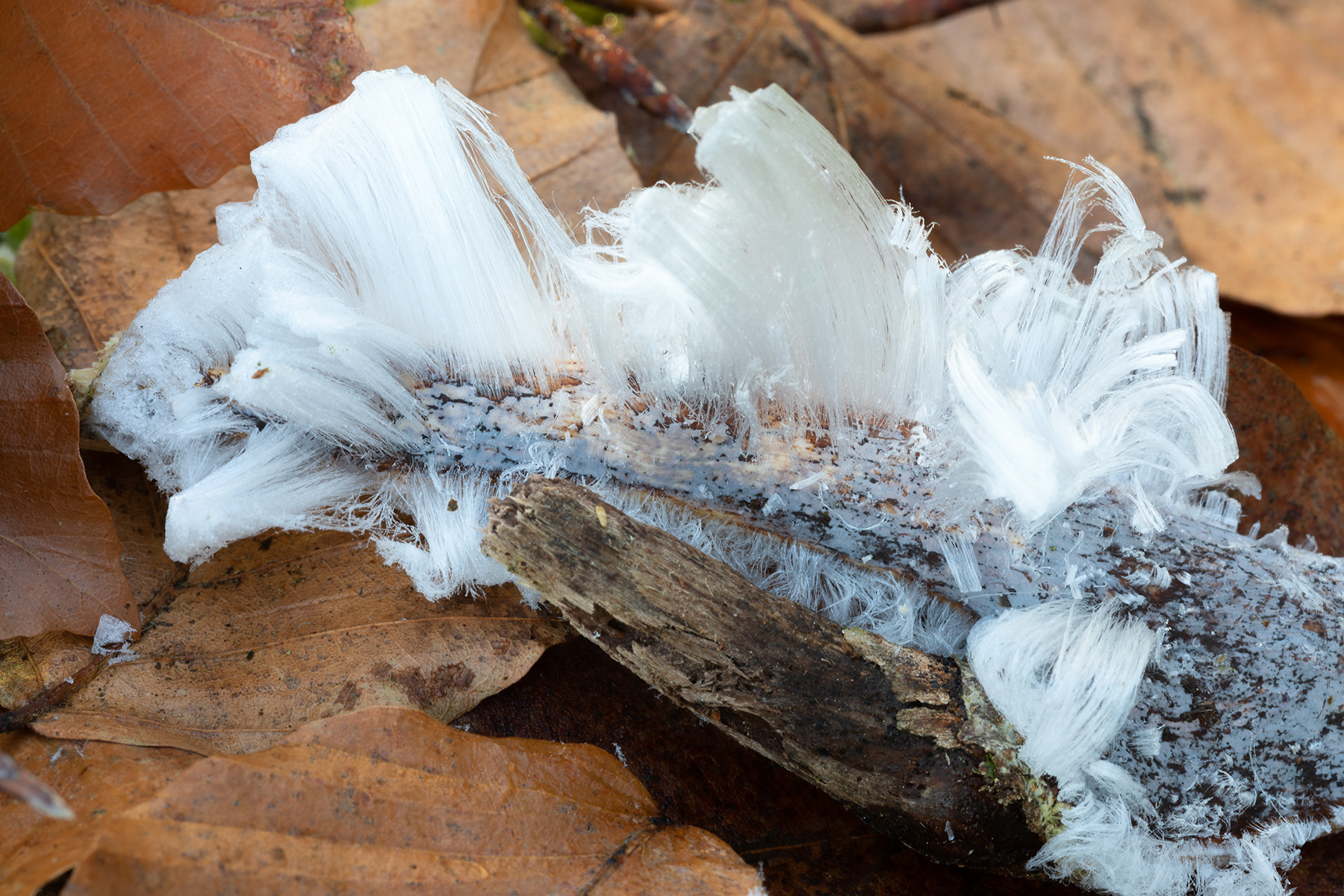Hair Ice
Hair ice is a remarkable phenomenon, found on dead wooden sticks from only a few broadleaved tree species. It occurs within a limited geographical range, and only when the temperature of the air falls below 0°C. A very thin film of liquid remains on the surface pores of the wood, while a continuous extrusion of fine strands forms as water from within the wood freezes on contact with the atmosphere. The process halts if the air temperature drops below -4°C. In Galloway, where I live, almost all of the hair ice that I’ve seen has been on dead twigs and branches of beech (Fagus sylvatica) although I have come across it a few times on rowan (Sorbus aucuparia) and birch (Betula spp). Hair ice may form on thin twigs or on fairly thick branches, either lying on the ground or still attached to the tree, but never on living parts of the tree.


In 2015, scientists in Germany and Switzerland, led by Diana Hofmann, and building on the work of Gerhart Wagner, have shown that the process of hair ice formation requires the presence of a fungus within the wood, which remains active in cold weather, and which creates a natural anti-freeze as it breaks down the lignin in the wood. In doing so, they confirmed the suggestion made by the German meteorologist and polar explorer Alfred Wegener in 1918, who commented “By chance, I was able to observe a strange and little-known tuft of ice that forms on damp, rotting wood, and found an interesting association with a fungus.” Wegener is better known today as the father of plate tectonics, although his theory, supported by a wealth of evidence, that the Earth’s continents move slowly over millions of years was ridiculed by geologists in his lifetime. Then as now, some scientists are reluctant to welcome input from those outside their specialist field.
Exidiopsis effusa may sound like a spell cast by an outraged Hermione Grainger, but it’s actually the name of the fungus which Hofmann and her colleagues found in all of their hair ice samples. The extrusion of hair ice depends on capillary action at the outside ends of the medullary rays, fine tubes which run laterally across the growth rings from the centre of the branch. Hair ice does not form on softwoods, because the medullary rays are too narrow.


Hair ice will often form repeatedly on the same pieces of dead wood. I’ve seen it on the same sticks in three consecutive winters, but not yet for a fourth year. This is obviously easier to monitor with dead branches which are still attached to the tree. The presence of the fungus is sometimes visually apparent, in the form of a thin grey film on the surface of the wood.


Hair ice has a consistency similar to candy floss, and since ice is a poor heat conductor, and an excellent reflector of radiated heat, it can persist for some hours after the ambient temperature has risen above freezing. On melting, hair ice forms a pale yellow liquid, which is slightly more viscous than water, rather like a strong white wine.


Processes of freezing and thawing are important factors in climate change, and there is still much about them that we don’t understand. Hair ice is easy to observe, requiring only an alarm clock and a weather forecast of below freezing conditions and still air or light wind following a period of fairly high humidity. It’s a very suitable subject for citizen science or educational experiments. I would love to see insights gained from a school project on hair ice prompting research which might help us to mitigate anthropogenic global heating.


References